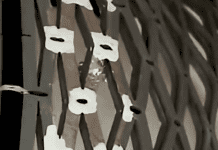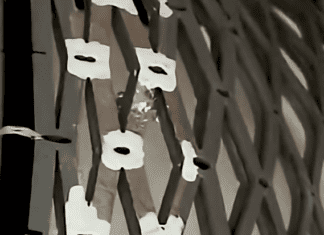This post is also available in:
 עברית (Hebrew)
עברית (Hebrew)
High-performance polymer fibers have been used in ballistics applications for more than forty years. Although effective at stopping or slowing down bullets, users have sometimes found these vests, which are worn either under or over clothing, to be heavy and bulky.
Scientists at the National Institute of Standards and Technology (NIST) have developed a new way to investigate the high-performance fibers used in modern body armor.
The research may help increase confidence in the apparel that protects military units, police departments and public figures from gunfire. It may also lead to the development of new, lighter weight materials for body armor in the future, according to homelandsecuritynewswire.
As the nation’s measurement lab, NIST researchers are especially qualified to develop ways to characterize both the fibers and their eventual deterioration.
“The fibers in these ballistic applications cannot fail [in the field], period,” said Gale Holmes, a materials research engineer at NIST. “But previously, we had no way to know if they were changing over time as people were wearing and using them.”
The ideal mechanical properties for these vests and other gear include a combination of high stiffness, large tensile strength, and a significant strain-to-failure in order to absorb the impact of the bullet. Initial work by Holmes revealed that the natural creasing and folding that a vest would normally encounter while in use led to a significant degradation of these critical mechanical properties, especially in humid environments.
The positron annihilation lifetime spectroscopy (PALS) technique provides a molecular-level view of the structure of materials. It has been used for testing materials in other sectors, for this work, positrons were injected into ballistic fibers and enabled researchers to determine if any voids were created during folding on a scale of less than 5 nanometers.
“It allowed us to characterize changes in the fibers that you cannot see with other techniques,” Holmes said. “We were surprised during our research at how sensitive the technique was.”
“Before, we didn’t have a really good way to discriminate why some materials broke during folding tests and some didn’t”. “This is the first materials characterization tool that gives insights into why some materials can be folded and still maintain their strength.”
The results may act as a design cue for those wanting to develop new alternatives to the current body armor. It may also help fine-tune the amount of fibers currently prescribed for these products, making for more comfortable vests.


























